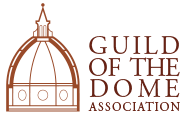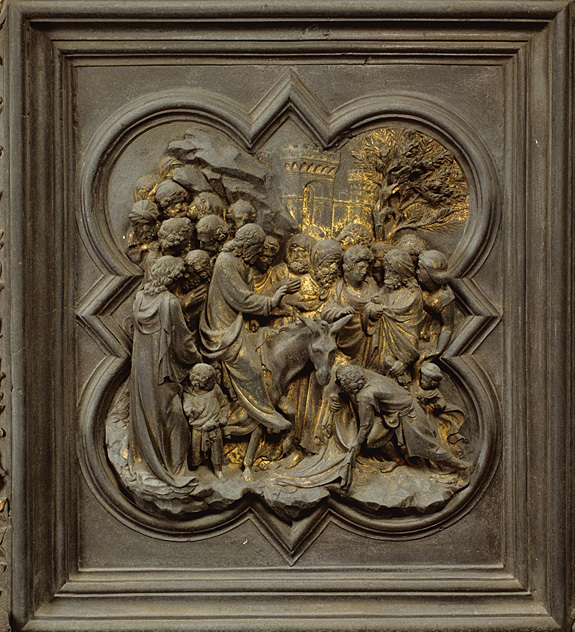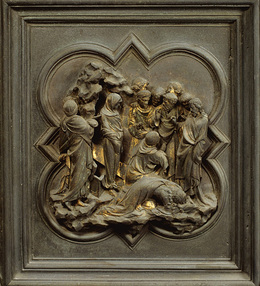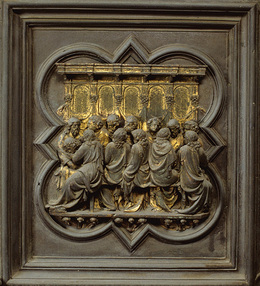Panel XI - The Entry into Jerusalem
Panel details:
This tile is the eleventh episode of the stories of the life of Christ.
Ghiberti placed all the characters on an elliptic base, in a powerful and projecting plastic execution. At the centre is the donkey on which Christ is riding, proceeding from left to right, his snout facing slightly outwards. The Messiah is presented in profile, dressed in a tunic and depicted with a beard and soft, long and curled hair. He is blessing a man in front of him, who bows to spread his cloak at his feet. Around Christ, the devotee and the donkey there is a crowd of twenty-two (!) figures divided into two groups: on the left, a group of bearded debating men surmounted by a rocky peak that seems to swallow them. To the right is a large olive tree, which acts as an umbrella for the second group of heads: men, women and children who are talking quietly. At the centre, a'stiacciato' (a very low relief) shows the fine battlement gate of Jerusalem through which Christ makes his entrance.
Ghiberti has chosen the donkey as the centre that divides the two groups, which represent two different approaches to Christian revelation. On the one hand, on the left we see that the group debating, as we have said, Pharisees, i.e. those who do not recognize Jesus as the Messiah; and on the other, on the right, the crowd of revellers represents the believers. The first are composed of an accumulation of discordant heads, which looks like a lump of stone, the latter are arranged in a semicircle, friendly and cheerful, ready to welcome the incoming figure of Christ.
Even elements 'peripheral' to figurative speech, such as rocks and olives, are included in this discourse about faith, modulated on these two polar opposites, and balanced by Christ at the centre. The stone on the left is associated with nonbelievers, because it has a similarly plastic reflective light, and because it is placed around them.
If the nonbelievers are 'earth' and 'stone', believers are associated with the olive tree, that is, Christ himself, who is called “Father olive flowering”
Finally, the crowd made up of these two groups is the set of all mankind. Christ is considered the King of all these people: this concept is communicated by the donkey, which recalls the prophecy of Zechariah, by the gesture of reverence of the man who stretches out his cloak, and by the great gate of Jerusalem ready to welcome the Messiah. This port, surrounded by walls and surmounted by a tower, recalls the Florentine doors and therefore Florence is associated with Jerusalem: as the holy city had opened and recognized the Messiah, likewise republican Florence had elected Christ as its only and sole king.



